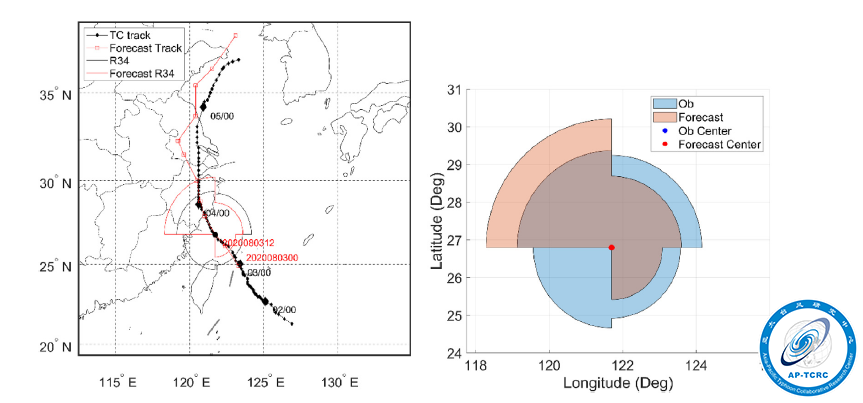Research on the size characteristics and variation patterns of tropical cyclones affecting East China (21ZR1477300)
The project titled " Research on the size characteristics and variation patterns of tropical cyclones affecting East China (21ZR1477300)," funded by the Natural Science Foundation of Shanghai, was approved in July 2021.
The size of a tropical cyclone (TC) refers to the extent of its destructive wind range. Scholars have long recognized that the TC size is an important parameter for describing its structure, with significant implications for intensity and the distribution of strong winds and heavy rainfall. It plays a key role in mechanism research, operational forecasting, and decision-making for typhoon prevention and disaster mitigation. Particularly for megacities in the eastern region, such as Shanghai, with numerous high-rise buildings and bridges spanning rivers and seas, precise and accurate estimation and forecasting of the TC wind range are crucial for ensuring the safety of people's lives and property. However, due to the limitations of monitoring methods, there is a scarcity of TC size data (especially in the western north Pacific), and a systematic understanding of its spatiotemporal distribution characteristics and their relationship with intensity and precipitation distribution is lacking. This project aims to use multi-satellite data and integrated information to establish a nonlinear TC size estimation model based on machine learning algorithms, construct a climate dataset of TC size in the western north Pacific, and focus on exploring the typical TC core, periphery, and size characteristics of different directions affecting the eastern region, as well as their spatiotemporal variation patterns. The project will summarize the typical TC size change models affecting the eastern region under different conditions, providing data and theoretical support for TC structure research and vortex initialization in numerical models, and offering references for typhoon prevention and disaster mitigation.

Fig1. The best case of DET forecast for Hagupit compared with TC size dataset (12 h forecast with initial time August 3, 2020 00 UTC).

